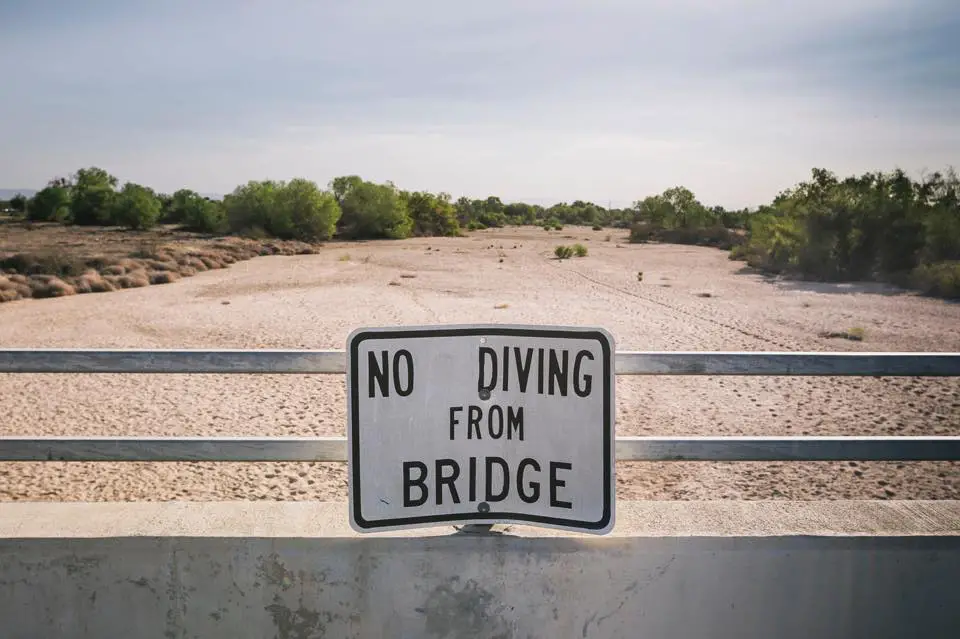Only a fool – or those politicians sitting on the religious right or in the pocket of big business – can continue to deny the link between our carbon emissions and global warming. We are the problem. We have to be the solution. Your children and their children are counting on our success.
As I write this, Australia is ablaze – north to south, east to west. These are fires of unprecedented ferocity and size. In the state of NSW alone, more than 2.7 million hectares (6.7 million acres) have been incinerated.
Some of the fires have been so intense that involved climate scientists believe the forests will not be able to regenerate in our lifetimes.
“Bushfires are normally considered to be ‘carbon neutral’ because, unlike fossil fuels, their emissions output is reabsorbed when the vegetation in fire-affected areas regrows.
However, experts fear the sheer scale and intensity of this year’s unprecedented fires, coupled with worsening drought conditions, has disrupted this recovery process.”
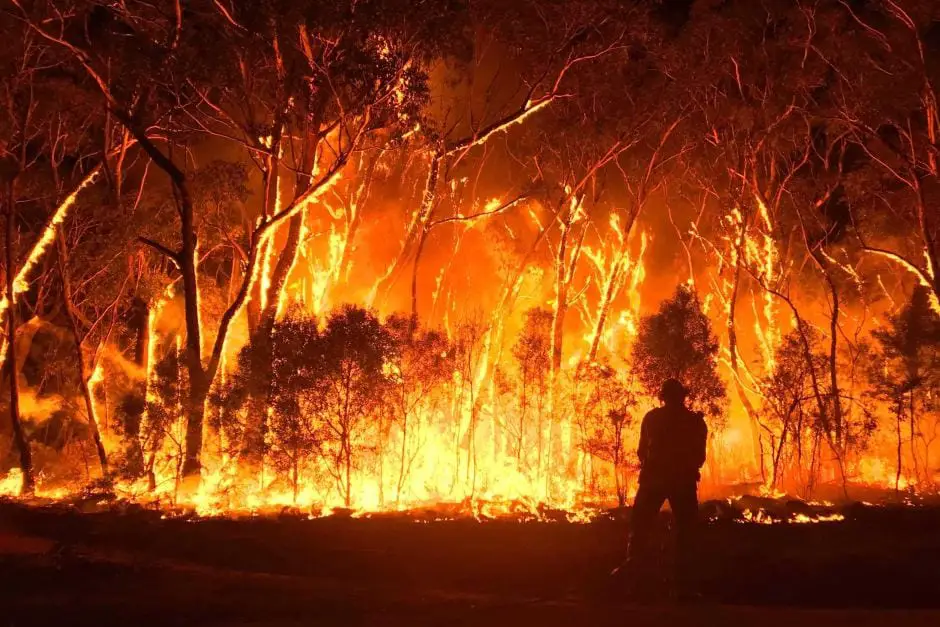
(Image by Gena Dray)
In both NSW and Queensland, rain-forests have gone up in smoke. Rain-forests that have existed far longer than the first human foot touched Australian soil 60,000 years ago.
Contents
Sydney’s air quality worse than Beijing and New Delhi!
Over the past two weeks, visibility in Sydney has, at times, been down to 50 metres with air quality 12 times above the danger threshold!

But then there’s the flipside of drought…
Meanwhile, 12,000 kilometres to the west, parts of East Africa are facing unprecedented flooding, land and mudslides. It’s not a co-incidence. It’s the same weather pattern affecting both continents. That pattern is a direct result of warming of the Indian Ocean.
And it isn’t just Australia and Africa that are affected. It’s every country and continent that sits on or near the Indian Ocean. That includes Antarctica where glaciers are melting at staggering rates.
A rumbling of revolution?
Today also brings news that Greta Thunberg, the 16 year old Swedish climate activist has been honored as Time Magazine’s Person of the Year! An activist derided by many politicians as a naive child!
Lexicographers at Collins Dictionary recently named Thunberg’s pioneering idea, ‘climate strike’ as the ‘word of the year’ due to the sheer number of searches for that term.

How can so many of our politicians be so out of touch with the groundswell of anger that is rumbling around the world?
The Trumps, Johnsons and Morrisons we elected to lead us are trying to stare down ‘Apocalypse Now’. But it isn’t going to work. Our carbon emissions dwarf even their combined egos and arrogance!
The bubble has to burst if we are to have a future…
The reality is that our leaders live in an ‘election cycle’. They are shit-scared of doing anything that might inflict economic pain. They prefer to live in a ‘growth at all costs’ bubble, terrified it will burst with them still in it.
In Paris, in 2015, our leaders agreed to keep global warming below 2 degrees Celsius – ideally below 1.5 C – by the end of this century. That agreement is already unattainable.
Four years later, another meeting is currently in progress in Madrid, Spain. The same rhetoric is going around the table. But the clock won’t stop just because some of us refuse to acknowledge reality!
Johan Rockstrom, director of the Postdam Institute of Climate Studies, one of the world’s most respected climate scientists, addressing the heads of delegations, activists and non-governmental organisations said:
“[for the last 20 years] we have underestimated the pace of change and we have underestimated the risks we are facing.”
He continued by saying that under the current ‘business as usual’ scenario, the planet is heading to warming by 3 to 4 degrees in only 80 years.
“That could create an environment unseen on earth for more than 4 million years and could trigger disastrous domino effects for human life! We stand on an unprecedented mountain of truth,” he said. “If nature fails, we fail as well.”
It’s real and it’s now…
New Delhi, a city of 22 million, hit 48 degrees Celsius last June. That’s 118.4F for those still wondering what decimal conversion is all about.
And New Delhi isn’t alone. June just happened to be the hottest month on record – for the world, not just New Delhi!
Not impressed?
Well, that’s understandable because July was even hotter! Yes, July made June look like a ‘wanna be’!
It’s gonna hurt – one way or the other…
If we want our gene pool to survive past the next three or four generations, we need to make radical changes now. It may hurt. Living standards may falter a little. We may suffer a little inconvenience. We may even have to forego some of life’s little luxuries – like three layers of packaging on everything I see in supermarkets.
But believe me, the alternative will be a lot worse!
So what are the BIG changes needed?
It’s not all bad news. Wonderful things are happening. EV’s (electric vehicles) are a great example.
But even if every petrol and diesel vehicle was taken off the road tomorrow, that would only reduce carbon emissions by 15% globally. And if we use coal or gas generated electricity to recharge our vehicles, the benefit is much reduced 🙁
This chart from the US Environmental Protection Agency can probably be extrapolated to most first world countries.
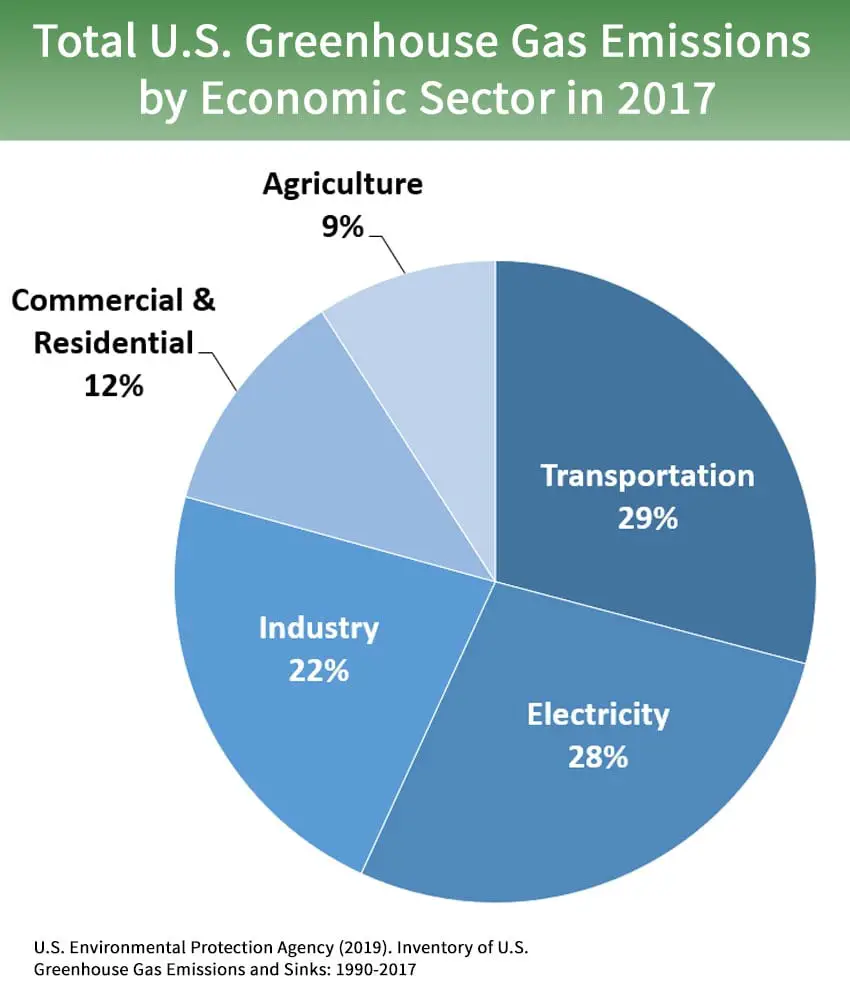
* Land Use, Land-Use Change, and Forestry in the United States is a net sink and offsets approximately 11 percent of these greenhouse gas emissions, not included in total above. All emission estimates from the Inventory of U.S. Greenhouse Gas Emissions and Sinks: 1990–2017.
To change our future – and save future generations – we need to completely stop burning fossil fuels. No coal. No gas. No peat. No oil.
It’s achievable but do we have the collective will?
The reality is that there are numerous, proven ways to generate emission-free electricity at low cost. The most obvious is hydro. But water doesn’t flow during extreme droughts such as that Australia and parts of central Africa are currently experiencing.
Big oil and coal miners will argue that wind stops and the sun goes down so neither of those are a solution.
Really?
Tell that to the 21% of Australian households with PV solar arrays sitting on their roofs! In total they generate in excess of 10 GW (gigawatts) of power. In fact, I’m sitting in air-conditioned comfort writing this knowing that 100% of the energy being consumed in my home is being generated by the sun!
Solar uptake in Australia is booming and not just domestically. Industrial and office buildings throughout the country are sprouting PV arrays. Massive solar farms are are being built, creating jobs and futures.
However, as wonderful and inexpensive as solar power is, the sun sets – yes, even in Australia. And when it’s dark, all those solar panels collect nothing more than dust.
But the free power generated by the sun is readily converted to power that can be used at night. All it needs is a way to store the power as kinetic energy and there are many ways to do that.
The most inexpensive is pump-hydro. Excess daytime power is used to pump water – fresh or seawater – uphill to a holding dam. At night, that water is released to run back downhill through turbines. Those turbines generate reliable energy.
The stored water becomes a battery containing stored power. Simple.
Sand and gravel can store energy!
An interesting twist has been developed by a team of European scientists who propose using mountains to build a new type of battery for long-term energy storage.
“One of the big challenges of making 100 percent renewable energy a reality is long-term storage,” says Julian Hunt, an engineering scientist at the International Institute for Applied Systems Analysis in Austria.
Lithium-ion batteries currently dominate the energy storage market, but these are better suited for short-term storage, says Hunt, because the charge they hold dissipates over time. To store sufficient energy for months or years would require many batteries, which is too expensive to be a feasible option.
Hunt and his collaborators have devised a novel system to complement lithium-ion battery use for energy storage over the long run: Mountain Gravity Energy Storage, or MGES for short.
Similar in princliple to pump-hyro, MGES involves storing material at elevation to produce gravitational energy. The energy is recovered when the stored material falls and turns turbines to generate electricity. But instead of storing energy in water, MGES stores it in sand or gravel!
Excess solar power moves sand or gravel uphill and when it is bought back down it generates power. Simple. And unlike water, there is no evaporation or leakage.
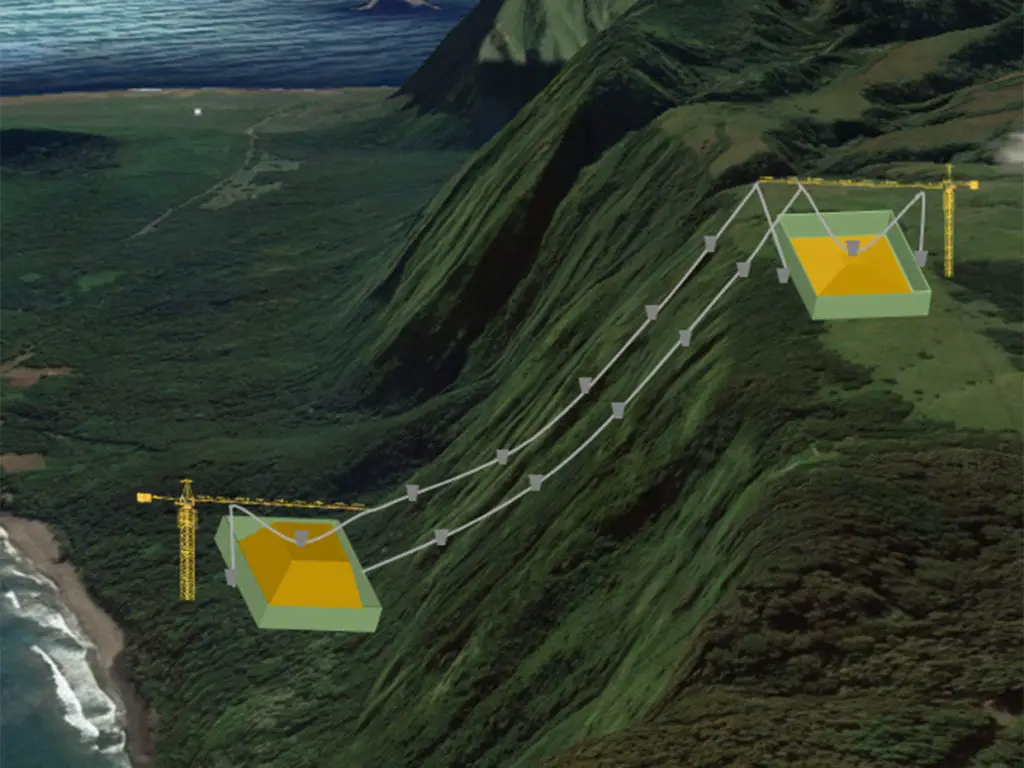
The system is very flexible, says Hunt, because you can easily alter the speed of the cables, increase the load, or change the number of vessels to meet varying energy demands.
The idea of using gravitational potential energy as a storage solution isn’t unique to Hunt and his team. Swiss startup, Energy Vault has developed a “battery” that involves raising and releasing 5,000 concrete blocks through a 33-story building.
A Scottish startup, Gravitricity is planning to drop weights down disused mine shafts to generate reliable, base-load power, while German company, Heindl Energy intends to lift a very large rock mass using water pumps.
And then there’s…
Tidal and wave power:
Both are perpetual. And both are proven power producing technologies. But they need public funding to bring them to scale.
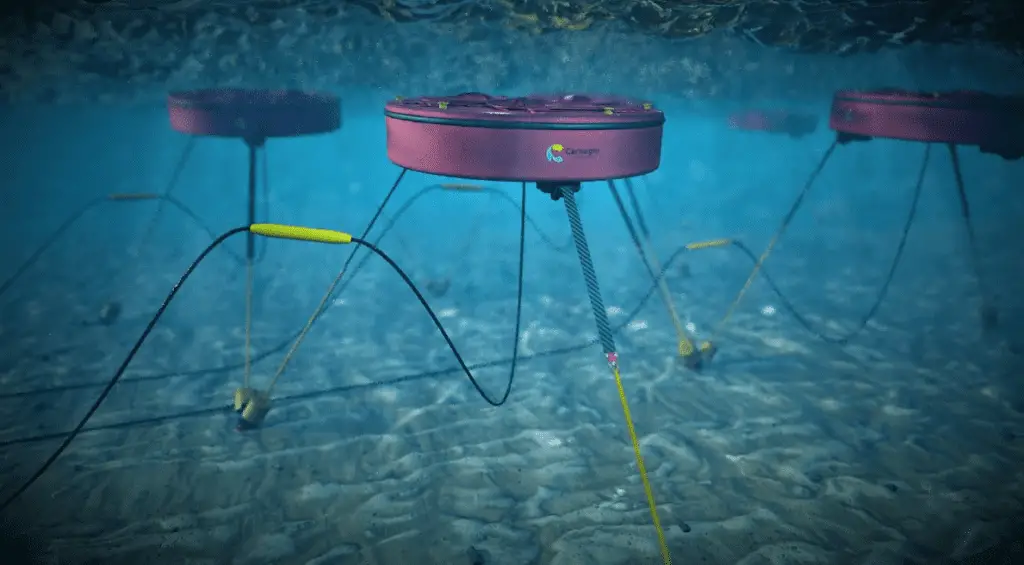
Geothermal:
An incredibly simple principle, geothermal power plants are fully functional in more than 20 countries. With technological advances in drilling techniques, including horizontal shafts, geothermal is viable in many parts of the world.

Bio-energy:
Bio-energy converts garbage and sewerage into energy with the additional benefit of reducing landfill. While that sounds ideal, there are major concerns from environmental groups. The main concern is whether maximum reprocessing/recycling will be impacted. In other words, will we end up burning all those materials that could have been reprocessed?
Another concern is the release of toxins into the atmosphere. Fortunately, many toxins are destroyed at the operating temperatures of these incinerators. Others can be “scrubbed” mechanically.
Good legislation – effectively policed – can and should ensure that only fully screened, non-recyclable refuse is burned with minimum effect on air quality.
It’s the will to change that’s missing, not the technologies…
Governments can’t tax power generated by the sun, the surf or sewerage. On the other hand, they do receive billions in royalties on coal and oil. And, of course, coal mines employ many more workers than a solar farm.
People with jobs and good incomes are happy voters and (unhappy) taxpayers. It’s a win-win for the government… in the short-term.
But when Sydney and Los Angeles experience their first 50 degree day, it will be far too late to turn back the clock.
It’s really, really simple, Homer…
If you want your children and grandchildren to have a future, you need to speak out and speak loudly just like Greta and the millions of school kids she has inspired are. Don’t let the kids do the heavy lifting for you!

